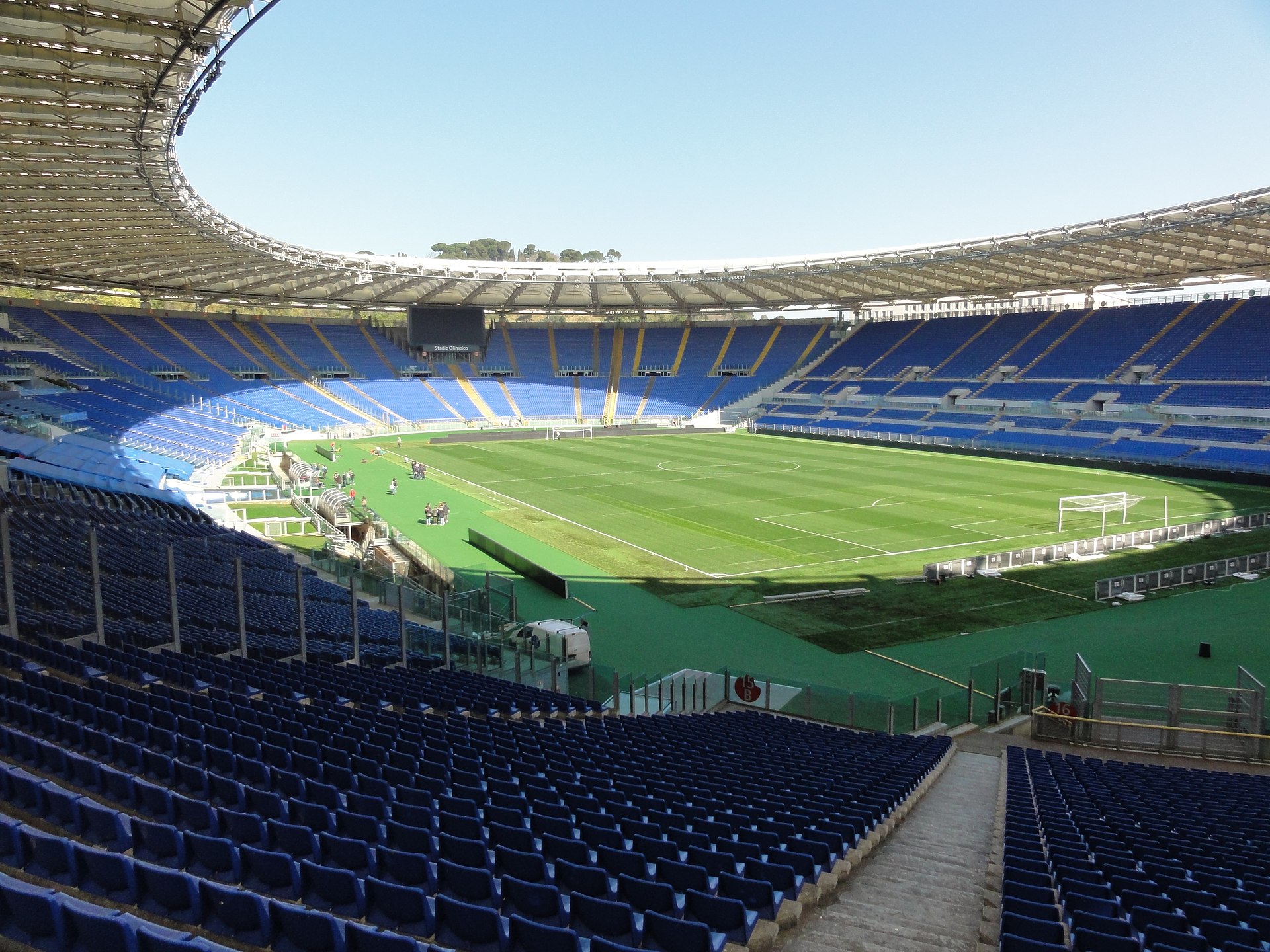From the newly revamped Juventus Stadium to the Stadio Olimpico in Rome, to the fortress that is the San Siro in Milan, these are some of the most significant stadiums in the football-crazed nation of Italy.
Juventus Stadium, Juventus
One of the newer stadiums, the Juventus Stadium broke ground in 2011 after the team spent 19 years playing at the maligned Stadio delle Alpi. The Juventus Stadium is not only one of the couple Italian arenas owned wholly by the club, it's also powered by solar energy and environmentally free. With the seats closer to the field, the fan atmosphere is more intimate than ever.
/juventus-stadium.jpeg?x92635)
Stadio Luigi Ferraris, Genoa/Sampdoria
Opened in 1911 and renovated in 1990 for the World Cup, Stadio Luigi Ferraris aka Marassi — named after the neighborhood in which it's located — seats 36,600 and plays home to both Genoa C.F.C. and U.C. Sampdoria. With English-styled towers in each of the corners, the arena spans the city but also offers a glimpse of the hills from certain seats.
/Stadio-Luigi-Ferraris-Genoa_Sampdoria.jpeg?x92635)
Stadio Giuseppe Meazza (San Siro), Inter/AC Milan
Stadio Giuseppe Meazza, commonly known as the San Siro, is the biggest stadium in Serie A. While it serves as the home field for both Inter and AC Milan, it sparingly enjoys a sellout with just half of the 80,000 available seats filled on average. Yet, all the games come with fiery atmospheres with every seat offering an excellent view of the pitch. The venue also plays host to the European Cup finals as well.
That's why it comes as a shock that both Milan clubs — AC Milan and Inter Milan — would construct a new stadium, “The Cathedral,” instead of renovating one of the temples of Italian football.
/Stadio-Giuseppe-Meazza-Inter_AC-Milan--1024x768.jpeg?x92635)
Stadio Olimpico, Lazio/AS Roma
The home of Lazio, the 72,698 capacity stadium is the second largest in Serie A after getting rebuilt in 1990 in preparation for the World Cup. Unsurprisingly, the two teams that call it home — Lazio and AS Roma — are also the league's biggest rivals. The local derby is one of the most watched games in Italy every year.

Stadio Friuli, Udinese
Home to the Udinese football club, Stadio Friuli opened in 1976 to a capacity of 41,652 but downsized to 25,144 in 2016 with a reconstruction that erased the track and moved the stands closer to the field. The stadium also serves as a field option for the Italian national team.
/Stadio-Friuli-Udinese.jpeg?x92635)
Stadio Renzo Barbera, Palermo
Next to beautiful Mount Pellegrino in Palermo resides the Stadio Renzo Barbera Palermo. The stadium opened in 1932 before going through a restructuring for the 1990 World Cup that trimmed its capacity down to 36,349 seats.
/Stadio-Renzo-Barbera-Palermo.jpeg?x92635)
Stadio Artemio Franchi, Fiorentina
Built in 1931, the Stadio Artemio Franchi is a stadium product of the Fascist era in Italy. Through various renovation efforts including one before the World Cup in 1990, the stadium removed the track and raised its seating capacity to 43,000.
/Stadio-Artemio-Franchi-Fiorentina.jpeg?x92635)
Stadio San Nicola, Bari
The home stadium for FC Bari, the Saint Nicholas Stadium holds 58,270 seats and is a behemoth of a stadium. While many of the Italian stadiums have since removed the track to bring fans closer to the action, Stadio San Nicola stuck with it. Regardless, the stadium wins plaudits for its flower shape design and has become a staple for Euro and World Cup qualification matches.
/Stadio-San-Nicola-Bari.jpeg?x92635)
Stadio Ennio Tardini, Parma
A small but fan-friendly stadium with 22,000 seats, Parma is one of the Italian stadiums that eschews the track for a more intimate experience. Home to Parma Calcio 1913, it has also served as the Italian national team host for some World Cup qualifying matches.
/Stadio-Ennio-Tardini-Parma.jpeg?x92635)
Stadio Nereo Rocco, Triestina
Located in Trieste, the Stadio Nereo opened in 1992 two years following the World Cup. The stadium holds 32,000 fans but poor performances from the club side U.S. Triestina Calcio 1918 have seen the team relegated to Serie C.
/DBpQ-K3XYAE75lQ.jpeg?x92635)
Stadio Dino Manuzzi, Cesena
Constructed in 1957 with two terraces that held 30,000 fans, the stadium went through a renovation in 1988 that saw it downsize to a capacity of 23,860. In 2012, the home team R.C. Cesena because the first side to play on artificial turf.
/Stadio-Dino-Manuzzi-Cesena-.jpeg?x92635)